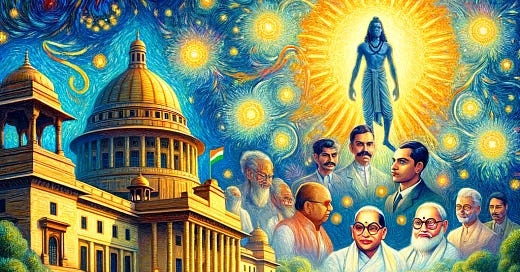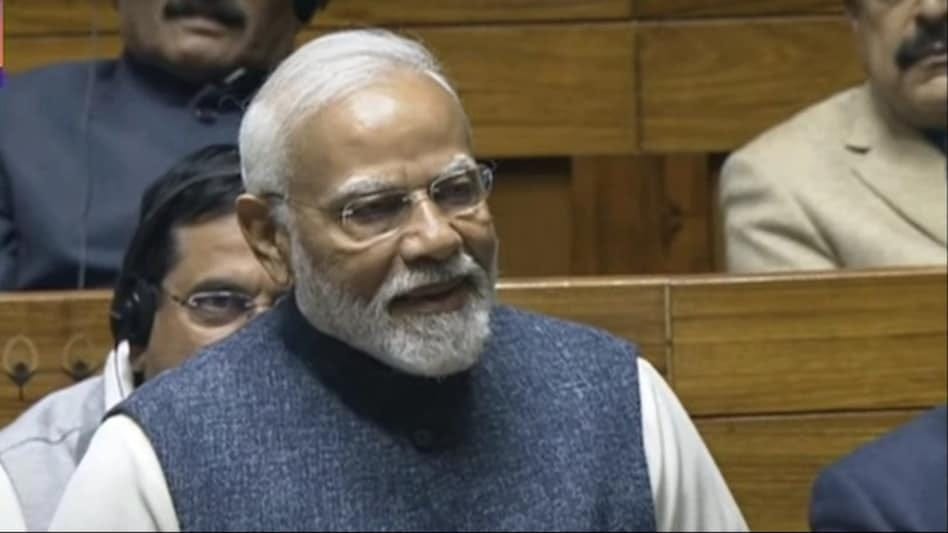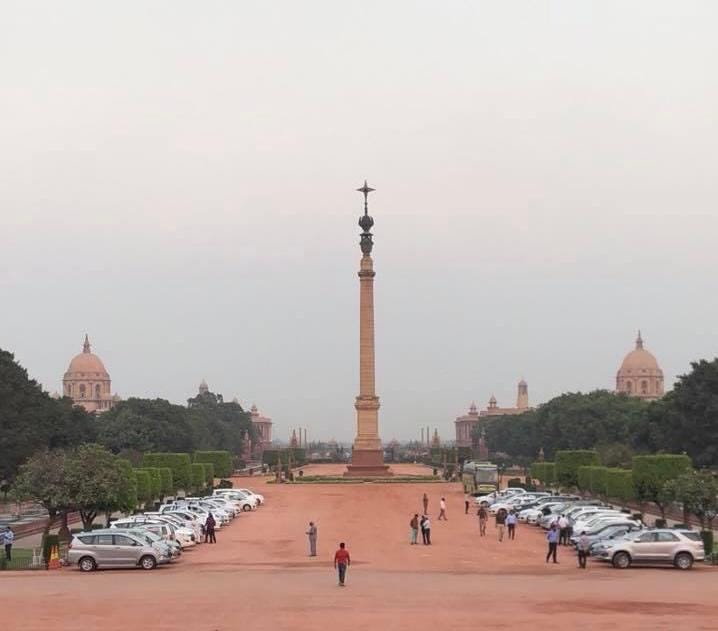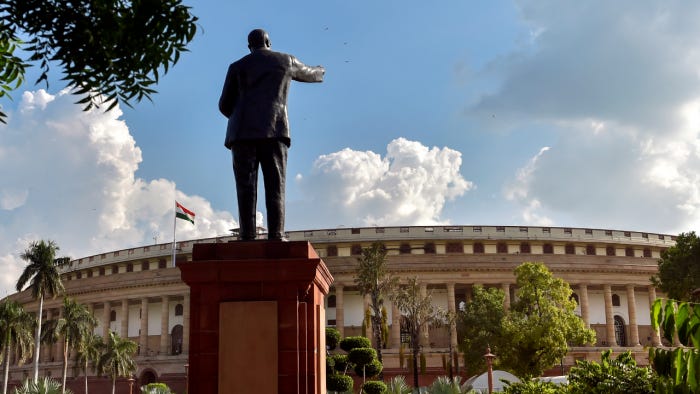"Ram Rajya" is Embedded into the Letter and Spirit of the Indian Constitution
The Essence of “Ram Rajya” in the Constitutional Framework"
In a recent dialogue with a friend, a distinguished retiree from the Indian Administrative Service, I encountered skepticism towards my assertion that the ethos of "Ram Rajya" is intrinsically woven into the Indian Constitution since its very inception. I maintained that this concept is not just a product of gradual evolution over decades or the result of constitutional amendments. It is, instead, the foundation of our governance charter, with developments over time progressively drawing us closer to that ideal state and mode of governance. However, it is in the last decade that we've seen a significant acceleration towards this goal, moving beyond mere rhetoric to tangible progress.
The Essence of “Ram Rajya” in Fundamental Rights
At the heart of the “Ram Rajya” concept are the Fundamental Rights enshrined in the Constitution, serving as the bedrock of justice, liberty, equality, and fraternity. These rights not only safeguard the liberties of Indian citizens against state encroachment but also affirm the nation's commitment to the ideals of a just and equitable society.
Aspirations Enshrined in Directive Principles
However, the soul of “Ram Rajya” aspirations is vividly captured in Part IV of the Constitution - the Directive Principles of State Policy. Although these principles do not confer enforceable rights upon the citizens and cannot be adjudicated by the judiciary, they are pivotal in guiding the governance of the Nation. They envisage a state that endeavors tirelessly towards creating a social order marked by justice, and equity, and promotes the welfare of its people.
DEI Before It Became a Global Norm
Long before the modern Western democracies embraced the principles of Diversity, Equity, and Inclusion (DEI), the Indian Constitution had laid down frameworks for reservation in jobs and educational institutions. This was a forward-thinking measure, espoused by Bharat Ratna Dr BR Ambedkar, aimed at rectifying centuries of injustice and social inequalities, including the abolition of untouchability, now a punishable offense.
A Closer Look at Directive Principles
The Directive Principles of State Policy reflect a comprehensive vision for a just society:
Promotion of Welfare of the People (Article 38) emphasizes the state's role in fostering a social order where justice permeates all aspects of national life.
Social Justice and Public Assistance (Articles 39, 41, 42), with specific mention of Articles 39B and 39C, focus on equitable resource distribution and preventing wealth concentration.
Living Wage and Healthy Standard of Living (Article 43), Promotion of Education and Economic Interests (Articles 45 and 46), and Protection of Environment (Article 48A), among others, are testaments to the Constitution's commitment to the holistic well-being of its citizens.
Economic Equity and Social Justice
Articles 39B and 39C specifically advocate for preventing the concentration of wealth and ensuring that the distribution of material resources serves the common good. These principles underscore the ethos of “Ram Rajya”, where prosperity is shared and accessible to all, ensuring no individual is left behind in the nation's march towards progress.
Cultural and Educational Rights: Upholding Minority Rights
The Constitution, through Articles 28 and 29, guarantees Cultural and Educational Rights, particularly safeguarding the interests of linguistic and religious minorities. This is perhaps a unique feature of our Constitution, where minorities enjoy certain rights that the majority does not, exemplifying the essence of “Ram Rajya” - a regime that is inclusive, equitable, and devoid of majoritarianism.
In summary, the Indian Constitution, with its blend of Fundamental Rights and Directive Principles, embodies the spirit of “Ram Rajya”. It envisions a nation where governance is anchored in the principles of justice, equity, and inclusivity, mirroring the noble reign of Lord Rama. This constitutional ethos, reflective of ancient wisdom, continues to guide India towards realizing the ideal state envisioned by its founding fathers - a testament to the timeless relevance of “Ram Rajya” in contemporary governance, epitomized by the dynamic and visionary leadership of Prime Minister Narendra Modi.
Toward Realizing “Ram Rajya”: A Vision in Progress
As we consider the fabric of the Indian Constitution and the ethos of “Ram Rajya”, it becomes clear that the realization of such a utopian state is not a one-off event marked by the adoption of the Constitution on January 26, 1950, but a continuous journey of evolution. The PM Modi’s slogan "Sabka Saath, Sabka Vikas, Sabka Vishwas" captures the essence of a socio-economic and political framework that embodies this evolutionary process towards “Ram Rajya”. The recent "Pran Pratishtha" of the Ram Mandir at Ayodhya serves as a pivotal moment, symbolizing a significant stride towards achieving this ideal. Under the indefatigable and undisputed leadership of Narendra Modi, India's trajectory towards “Ram Rajya” seems aligned with the principles of equity, justice, and inclusivity. Yet, the pace must accelerate to transform the Directive Principles into enforceable Fundamental Rights, bringing us closer to the vision Tagore dreamt of — a nation "where the mind is without fear and the head is held high."
This goal, far from being an unreachable mirage, is within our grasp, potentially achievable within decades. The outcome of the 2024 Lok Sabha elections will be crucial in determining whether India remains steadfast on this path, proving that the concepts of a "Republic" and "Ram Rajya" are not only compatible but also complementary, embodying the essence of parliamentary democracy where the leader serves the collective will of the people, akin to Lord Ram's governance. This was eloquently articulated in the Rajya Sabha last evening by the BJP National President, Shri JP Nadda. He referenced the words of Dr. B.R. Ambedkar as well as those of Mahatma Gandhi, providing a profound context to his discourse.
Envisioning “Ram Rajya”: A Pathway to Compassionate Governance
With the blessings of Lord Ram, let us advance with hope and determination toward the realization of “Ram Rajya” within our lifetimes. Guided by the enduring values of justice, inclusivity, and respect for all, our journey reflects the true essence of “Ram Rajya”, where every citizen flourishes in harmony and prosperity, and India rightfully claims its esteemed position among the global fraternity.
In his address last evening, marking what is anticipated to be the final session of the current Lok Sabha, the Prime Minister articulated a new blueprint for citizen-centric governance. This framework is anchored in संकल्प (Sankalp), signifying a firm "Resolution" or "Determination" towards noble goals; संवेदना (Samvedna), embodying "Sensitivity" or "Compassion" towards the needs and feelings of others; and सहानुभूति (Sahanubhooti), reflecting "Empathy" or "Sympathy," the capacity to share and comprehend the emotions of others. These principles, emerging as the cornerstone of governance under “Ram Rajya,” promise a brighter future for all, paving the way for a society rooted in empathy, compassion, and shared resolve.
Jai Sri Ram! Jai Siya Ram!
जय श्री राम! जय सिया राम!








